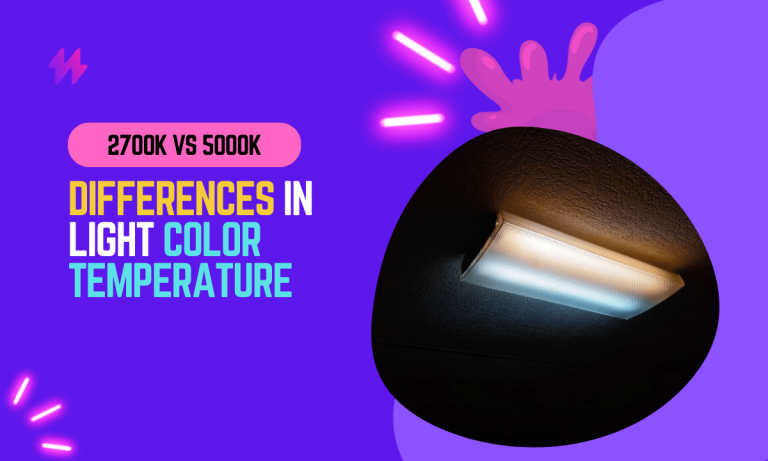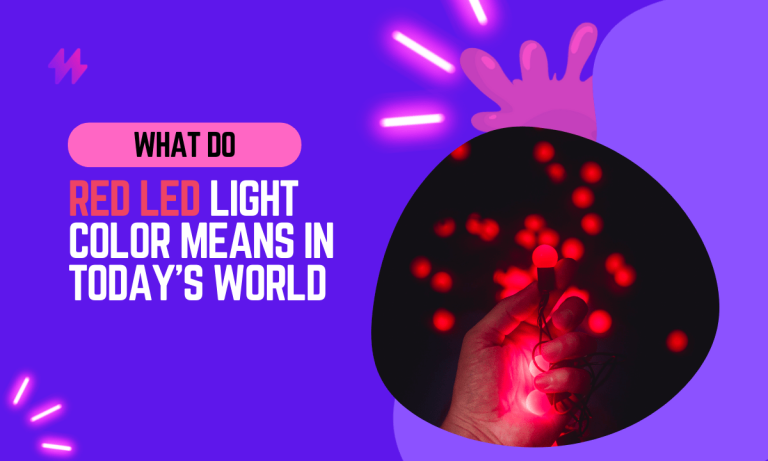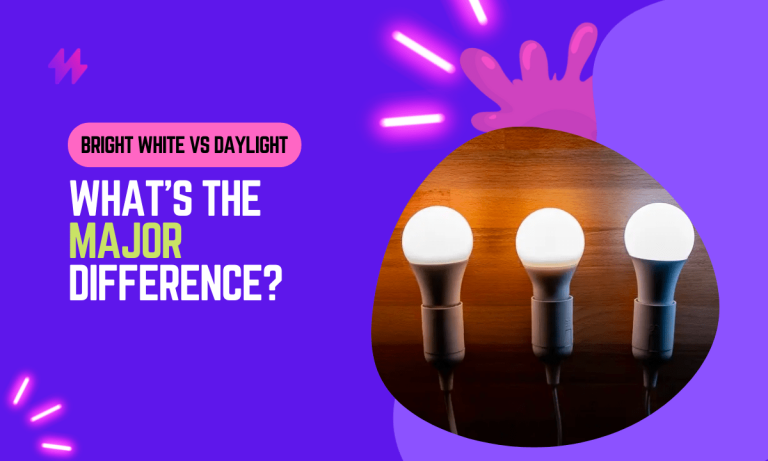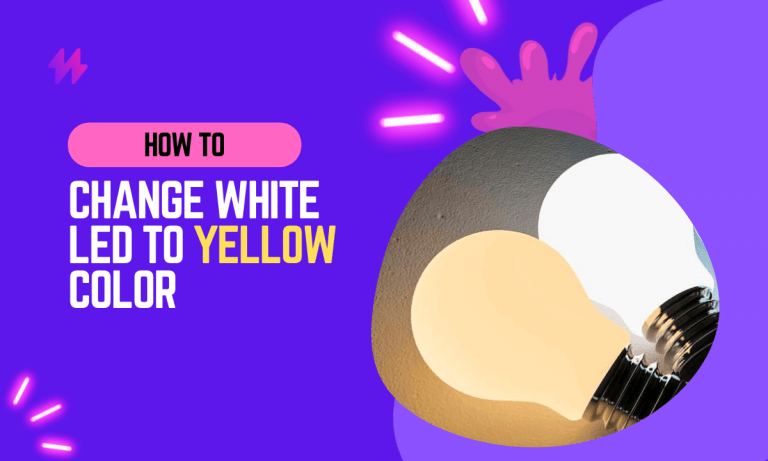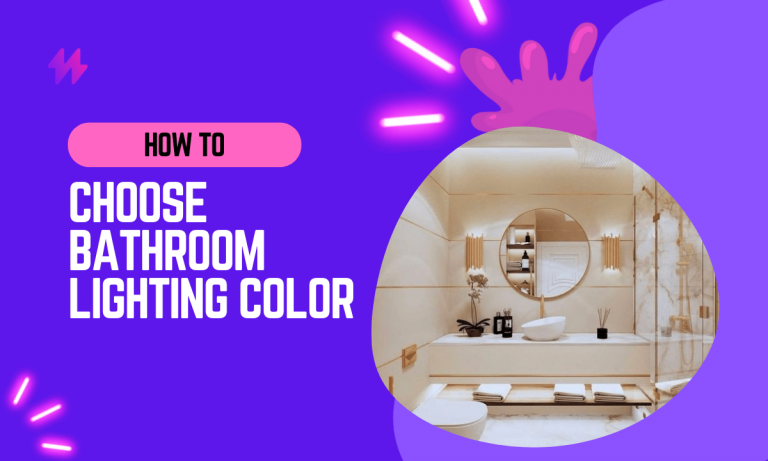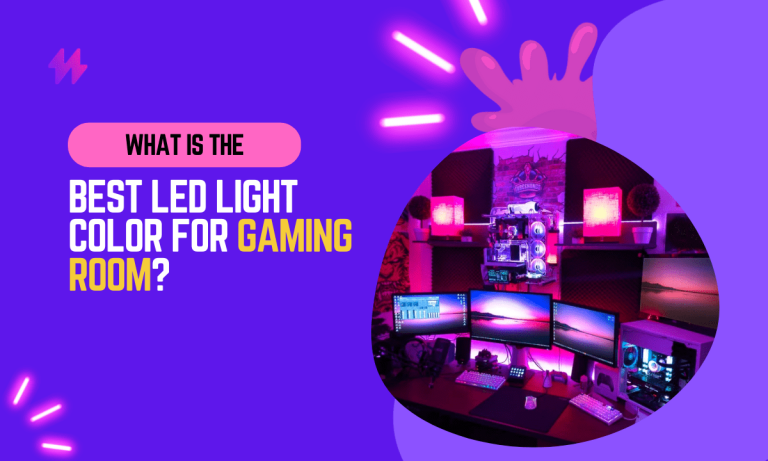How To Check Color Temperature Of LED Light?
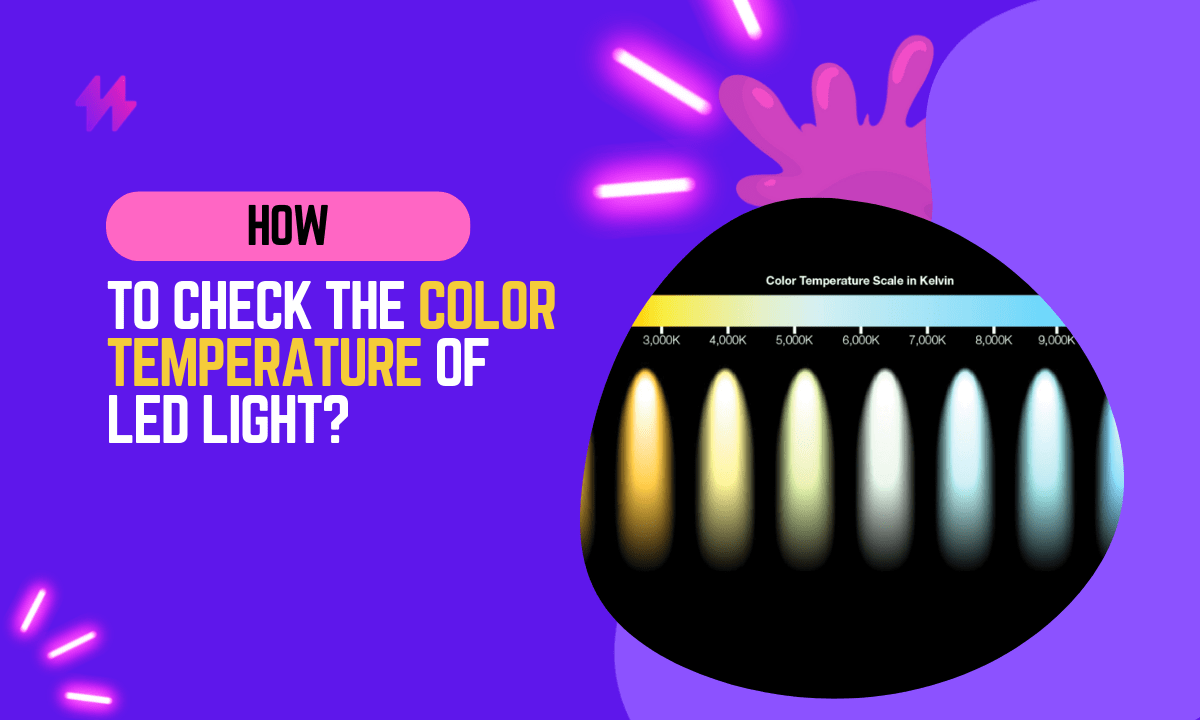
Ever noticed how some lights feel warm, like a cozy fireplace, while others are cool and bright like daylight? That’s because lights have something called “color temperature,” which affects how they look and make us feel. Imagine it as a scale from warm to cool.
In this guide, we’re going to explore the secrets of light colors, especially the ones from LED bulbs. Understanding this can help you create the right atmosphere in your home or workspace. It’s like having the power to paint your room with light!
We’ll look into the technical stuff, like the Kelvin scale, but don’t worry; it’s simpler than it sounds. We’ll also talk about tools, like apps on your phone, that can help you measure these light colors. No need for a science degree – just your curiosity.
But wait, lights don’t work alone. They team up with brightness (measured in lumens) to create the perfect vibe. We’ll uncover this partnership and show you how to pick the right lights for different places.
Think of this guide as your flashlight into the world of LED lights. By the end, you’ll not only know the science behind it but also how to make your living space shine just the way you like it. So, let’s light up this journey and make your world a little brighter!
When selecting the right light temperature for your space, it’s important to consider how much illumination you desire and the overall color spectrum you want to create. Different light sources, such as LED lighting, incandescent bulbs, and fluorescent lights, have varying color temperatures that can dramatically influence the mood and functionality of your home or office.
How to Check the Light Temperature and Measure Color Temperatures of LED Light?

Now that we’ve dipped our toes into the concept of color temperature, let’s take a deeper dive into how we measure it and what those measurements mean for the lights around us.
Understanding how to check color temperature of LED light is crucial for achieving perfect lighting in any space. Using color temperature measuring devices can help ensure that you select the right light bulbs for your needs, whether you prefer warm or cooler color temperatures.
How to Check Color Temperature of LED Light: Understanding Light Color Temperatures
First things first – the Kelvin scale. It might sound like something out of a science fiction movie, but it’s actually pretty straightforward. Imagine a scale from 1000 to 10000, where each number represents a different shade of light. Lower numbers (around 2000-3000K) mean warm, cozy light, like a sunset.
As you move up the scale, you get cooler tones, resembling the brightness of midday sunlight. So, when you see a light labeled 4000K, think of it as a pleasant, neutral white.
When choosing light fixtures for a specific space, understanding the color temperature is essential, as it significantly affects the ambiance and overall aesthetic. By using accurate color temperature measuring devices, you can ensure that your lighting solution, whether it’s LED or fluorescent, aligns with your desired color spectrum, be it warm colored light or cooler tones. The right kelvin temperature makes all the difference in creating the perfect mood and functionality for different environments.
Guide to Checking LED Light Color Temperature
Measuring color temperature might sound like a task for experts, but fear not – you don’t need a lab coat for this. It’s as simple as using a color temperature meter or even your smartphone. These devices detect the color of light and give you a reading in Kelvins. The lower the number, the warmer the light, and the higher the number, the cooler it is. Armed with this knowledge, you can now walk into any room and, figuratively speaking, read the temperature of its light.
Measuring color temperature can be a straightforward process, even for everyday individuals. By understanding the degrees Kelvin and how they relate to warmer color temperatures or cooler hues, you can optimize your lighting to fit your desired ambiance and functionality.
How to Determine if Your LED Bulb is Warm or Cool: Tips and Insights
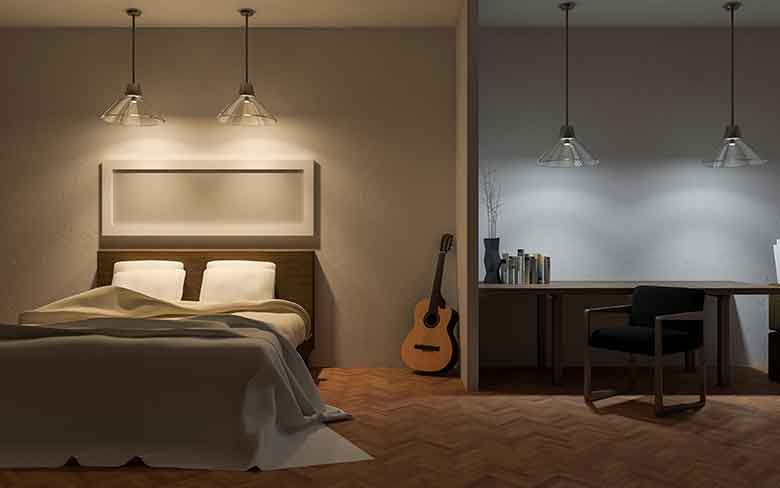
Now, let’s talk about warm and cool light. Warm light, with lower Kelvins (usually 2000-3000K), creates a cozy and inviting atmosphere – think of the soft glow of a candlelit dinner.
On the flip side, cool light (around 5000K and above) is more energizing and akin to natural daylight. Understanding this warm-cool spectrum helps you choose the right light for different spaces and moods.
Understanding the correlation between color temperature and mood can significantly enhance your light design. By selecting the right LED lamps with accurate color temperatures, you can create a soothing ambiance with warm lights or stimulate energy with cooler, daylight-mimicking lighting.
Understanding the Color Rendering Index (CRI)
The Color Rendering Index, or CRI, is like a quality check for lights. It tells you how accurately a light source represents colors compared to natural light. The scale goes up to 100, with higher numbers meaning truer colors. So, if you want to showcase the vibrant colors in your artwork or enjoy the true colors of your clothes, pay attention to the CRI when picking out lights.
Armed with these insights, you’re not just looking at lights; you’re deciphering their language. The next time you step into a room, you’ll read the color temperature like a pro and choose the light that sets the perfect mood. It’s your backstage pass to the world of light, where you control the ambiance.
Learn more: How to convert Lumen to Watt with our calculator
When selecting lighting for your space, understanding the correlated color temperature can make a significant difference in how colors appear. Whether you choose LED fixtures or fluorescent lamps, it’s essential to pay attention to the color temperature rating to ensure an amazing lighting solution that meets your needs.
Essential Apps for Measuring LED Light Color Temperature
Gone are the days when measuring the color temperature of light required specialized equipment. Thanks to the wonders of technology, you can now turn your smartphone into a handy tool for gauging the hues of your surroundings. Let’s explore the world of apps designed to demystify light temperature measurement.
Measuring the color temperature of LED lights can greatly enhance your understanding of how they emit light in terms of warmth and coolness. By utilizing color-temperature measuring devices and being aware of the kelvin color temperature, you can transform your environment to achieve specific atmospheres that correlate with various color temperatures.
Essential Light Meter Apps for Checking LED Color Temperature
These apps essentially transform your smartphone into a portable light meter. They measure the intensity of light in lux and, in some cases, also provide color temperature readings. Examples include “Lux Light Meter” and “LightMeter.”
Many of these apps also facilitate the adjustment of color temperature settings, allowing users to configure light output to closely resemble natural light sources or to achieve specific temperatures for various tasks. By using these tools, you can seamlessly transition between warm color temperature for relaxation and cooler tones for productivity, ensuring enough illumination in any setting.
Top Color Temperature Meter Apps to Measure LED Light
Dedicated to assessing color temperature, these apps use your smartphone’s camera to analyze the ambient light and provide a Kelvin reading. “Light Spectrum Pro” and “Light Meter – Color Temperature” are popular choices in this category.
Several apps dedicated to measuring color temperature can help you achieve the perfect white light in your space. By utilizing these tools, you can fine-tune your lighting setups with the right LED color temperature or fluorescent office lights to create harmonized environments that enhance your desired color spectrum.
Essential CRI Measurement Apps for Accurate LED Color Temperature Testing
For those keen on evaluating color accuracy, some apps focus on the Color Rendering Index (CRI). “CRI Light” and “CRI & White Balance Meter” are designed to help you understand how faithfully a light source represents different colors.
To truly appreciate the impact of color temperature on your lighting design, it’s beneficial to understand how various light sources can render colors differently. For example, using grow lights with the appropriate colour temperature can optimize plant growth by providing the ideal spectrum for photosynthesis. Adjusting the colour spectrum with color correction filters can lead to more accurate color representation in photography or videography, particularly in Lightroom. By selecting the correct stage illumination settings, you can enhance the vibrancy of colors while achieving the desired warm/cool balance for your lighting needs.
Using Apps to Measure LED Light Color Temperature: A Comprehensive Guide
- Calibration: Ensure that your smartphone’s camera is calibrated for accurate readings. Some apps offer calibration features to enhance precision.
- Ambient Conditions: Consider the ambient conditions when using these apps. Factors like other light sources and reflections can impact readings, so it’s advisable to use these apps in controlled environments.
- Explore Additional Features: Some apps come with extra features like histograms, which visually represent the distribution of colors in the light spectrum. Exploring these additional tools can enhance your understanding of the lighting conditions.
Understanding the Difference: Color Temperature vs. Lumens
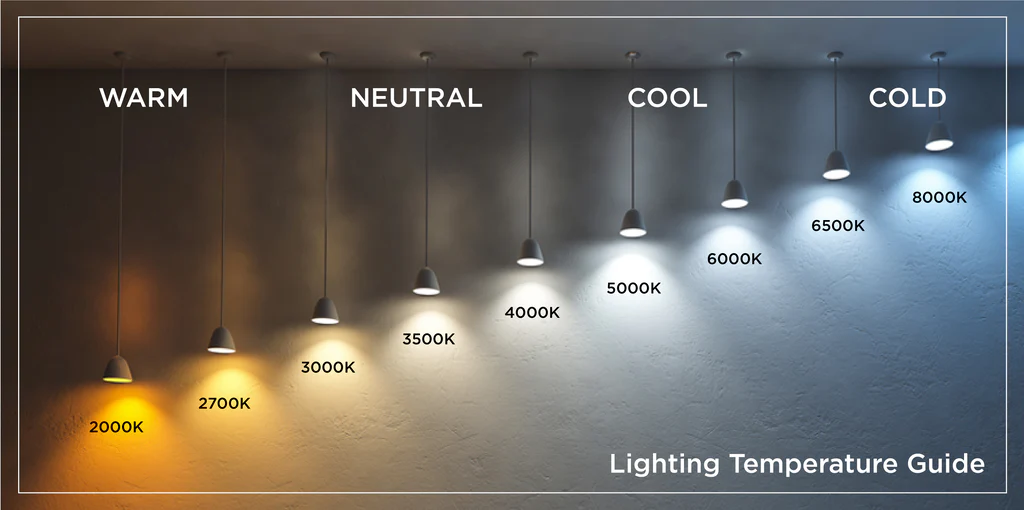
Understanding the interplay between color temperature and lumens is akin to decoding the dynamic duo that shapes the visual landscape of our surroundings. Color temperature sets the mood, while lumens dictate the brightness. Together, they choreograph a symphony of light that can transform any space.
The interplay between color temperature and lumens is essential for creating a harmonious lighting experience in both residential and commercial spaces. Utilizing tools like color temperature measuring devices and lighting spectrum charts can assist in achieving the specific corresponding color temperature for your needs, whether for plants with grow lights or in a carefully designed workspace.
Distinguishing Color Temperature and Lumens: Essential Guide
Color Temperature: This is the character of the light, expressed in Kelvins (K). Lower Kelvins (2000-3000K) gives off a warm, cozy light, reminiscent of a sunset. As you move up the scale, the light becomes cooler, resembling daylight.
Lumens: Lumens measure the brightness of the light emitted by a source. In simple terms, the higher the lumens, the brighter the light. For instance, a 60-watt incandescent bulb typically produces around 800 lumens.
By understanding the various aspects of color temperature, you can select the right lighting solutions for any setting, whether it’s indoor retail lighting or a cozy home environment. The interplay between warm hues and cool colors, aided by tools like color temperature measuring devices, allows for customization that suits your aesthetic preferences and lighting needs.
Achieving Balance in Light: Understanding Color Temperature and Brightness
While color temperature sets the emotional tone, lumens ensure visibility. The trick is to strike a harmonious balance between the two, aligning them with the function and atmosphere you desire in a particular space.
Achieving the desired ambiance in your space often calls for careful selection of different color temperatures across the color temperature axis. By utilizing various lighting options, including LED sources and specialty bulbs, you can fine-tune the mood to achieve that perfect blend of warm and cool tones.
- Warm and Cozy Spaces: For areas where you want a warm and cozy ambiance – think living rooms or bedrooms – opt for lower color temperatures (around 2700-3000K) paired with moderate to low lumens. This combination creates a comfortable and inviting atmosphere.
- Energizing Workspaces: In workspaces like offices or kitchens where clarity is key, consider cooler color temperatures (4000K and above) with higher lumens. This mimics natural daylight, promoting alertness and productivity.
- Artistic Illumination: When showcasing artwork or creating a dramatic effect, play with both color temperature and lumens. A higher color temperature can make colors pop while adjusting lumens highlights or dims the subject matter.
**Frequently Asked Questions on Measuring LED Light Color Temperature**
Q: How do I know if a light bulb emits warm or cool light?
A: Check the color temperature indicated on the packaging. Lower Kelvins (e.g., 2700K) indicate warm light, while higher Kelvins (e.g., 5000K) suggest cooler light. Additionally, warmer light often appears more yellow, while cooler light has a bluish tint.
Q: Is there a correlation between color temperature and the brightness of the light?
A: No, color temperature and brightness (measured in lumens) are distinct characteristics. Color temperature sets the tone (warm or cool), while lumens determine how bright the light is. You can have a warm, dim light or a cool, bright light.
Q: Can I use smartphone apps to measure color temperature accurately?
A: Yes, there are several apps designed to measure color temperature using your smartphone’s camera. While they provide a good estimate, for precise measurements, especially in professional settings, dedicated color temperature meters may be more accurate.
Q: Should I use the same color temperature throughout my entire home?
A: Not necessarily. Different areas serve different purposes. Consider warmer tones for cozy spaces like the bedroom and cooler tones for task-oriented areas like the kitchen or office.
Q: How does color temperature impact my sleep patterns?
A: Warmer light in the evening (around 2700K) is generally recommended as it mimics the natural warm tones of sunset, signaling to your body that it’s time to wind down. Cooler light in the morning (around 5000K) can help you wake up and feel more alert.
Understanding the impact of color temperature on your overall lighting experience is essential for creating the right atmosphere in any space. By choosing light fixtures and bulbs with the appropriate colour temperature, you can effectively manipulate the colour spectrum to enhance mood and functionality, from warm yellowish glow for relaxation to sharp blueish-white lights for productivity.
Final Thoughts on Understanding LED Light Color Temperature
In conclusion, understanding how to check the color temperature of LED lights is crucial for achieving the desired ambiance and functionality in any space, whether it’s a home, office, or commercial area. Color temperature, measured in Kelvin, affects how we perceive the light emitted by LEDs, influencing everything from mood to visual clarity. Tools like a spectrometer or color temperature meter provide precise measurements and are indispensable for professionals in photography, videography, and design, where accurate color rendering is paramount. Additionally, for those without access to specialized equipment, many smartphone apps are capable of providing a reasonable estimation of color temperature, though they may lack the precision of dedicated devices.
Moreover, knowing how to assess the color temperature of LED lights allows individuals to make informed choices about purchasing and installation, ensuring that the lighting solutions meet their specific needs. For instance, warmer tones (lower Kelvin values) are often preferred in residential settings for their cozy and relaxing effect, while cooler tones (higher Kelvin values) are favored in workspaces and kitchens for their bright and energizing qualities. Understanding the nuances of color temperature can also assist in troubleshooting and adjusting existing LED setups to improve comfort or enhance productivity. By effectively managing the color temperature of LED lights, one can not only optimize the visual impact of a space but also contribute to well-being and task performance, making it a key skill for both lighting professionals and general consumers alike.
How To Check Color Temperature Of LED Light | Practical Steps for Checking LED Light Color Temperature
Understanding the various color temperature ranges is essential in learning how to check color temperature of LED light effectively. On the temperature scale, different temperature bulbs, such as those emitting warm or cool tones, can be categorized into arbitrary color temperatures. For instance, a cold daylight bulb generally exhibits high celsius temperature values, while a soft white color light delivers a more neutral color, often represented in a lower range. Utilizing color space charts can help identify the actual colour temperature of various lights, such as stage illumination or business office lighting. Testing color samples under the same lighting conditions can reveal the rendered colors, enabling light experts to accurately assess the result temperature. Employing a color correction filter may assist in verifying the corresponding celsius temperature against the reference light, whether it’s a white bulb or an old style fluorescent. With an understanding of how light influences color values, one can effectively navigate the nuances between glowing gases and dimmable cold lights, ensuring the chosen illumination enhances the atmosphere harmoniously.
How To Check Color Temperature Of LED Light | Identifying the Most Common Color Temperature Ranges
Color temperature is measured on a scale that helps identify the warmth or coolness of light emitted by various LED fixtures. Common ranges include the lowest possible temperature of 2700K, which produces a warm, orangey-yellow hue, ideal for creating a cozy atmosphere in spaces like living rooms. Many lights fall into the moderate yellowish range of 3000K to 4000K, providing balanced illumination suitable for areas requiring clarity, like kitchens and workspaces. On the cooler end of the spectrum, temperatures above 5000K can emit stark brightness with bluish hues, often used in outdoor lighting or for task lighting where high visibility is essential.
To check the color temperature of LED lights, one can refer to lamp markings or specifications provided by manufacturers. This information often indicates the bulb rating, such as whether they emit warm or cool tones. Certain color temperatures, indicated by a color temperature axis/curve, demonstrate how light appears under various conditions. For instance, a light source with low color rendering may generate yellowish-orange hues and offer a gentle glow, while smart dual-bar corner lamps can automatically adjust their color temperature to match user preferences. Test color samples in a lightroom setting to visualize how each option interacts with your environment and avoid choices that produce an unpleasant greenish light or harsh blue tones.
Tools Required for Accurate Measurement of LED Color Temperature
Accurate measurement of LED color temperature requires specific tools. A color temperature meter or spectrophotometer can effectively determine the thermodynamic temperature of the light emitted from an illuminated piece. These devices often display color bands for various temperatures, allowing users to quickly identify whether the LED emits warm/cool light or intense bright blue. Understanding how to check color temperature of LED light helps in choosing the right replacement bulbs for a one-of-a-kind lamp or fixture.
A digital camera with a color reference chart can also assist in evaluating color temperature. By capturing images of the light with the camera set to specific settings, users can analyze the resultant tones. Different settings will help reveal the varied shades, from reddish tones to low shade outputs. A dimmer light can also affect perceived color temperatures, offering a dynamic way to visualize changes in color temperature auto adjustments. Knowing how to check color temperature of LED light will greatly enhance your selection process for floor lamps or other lighting fixtures.

